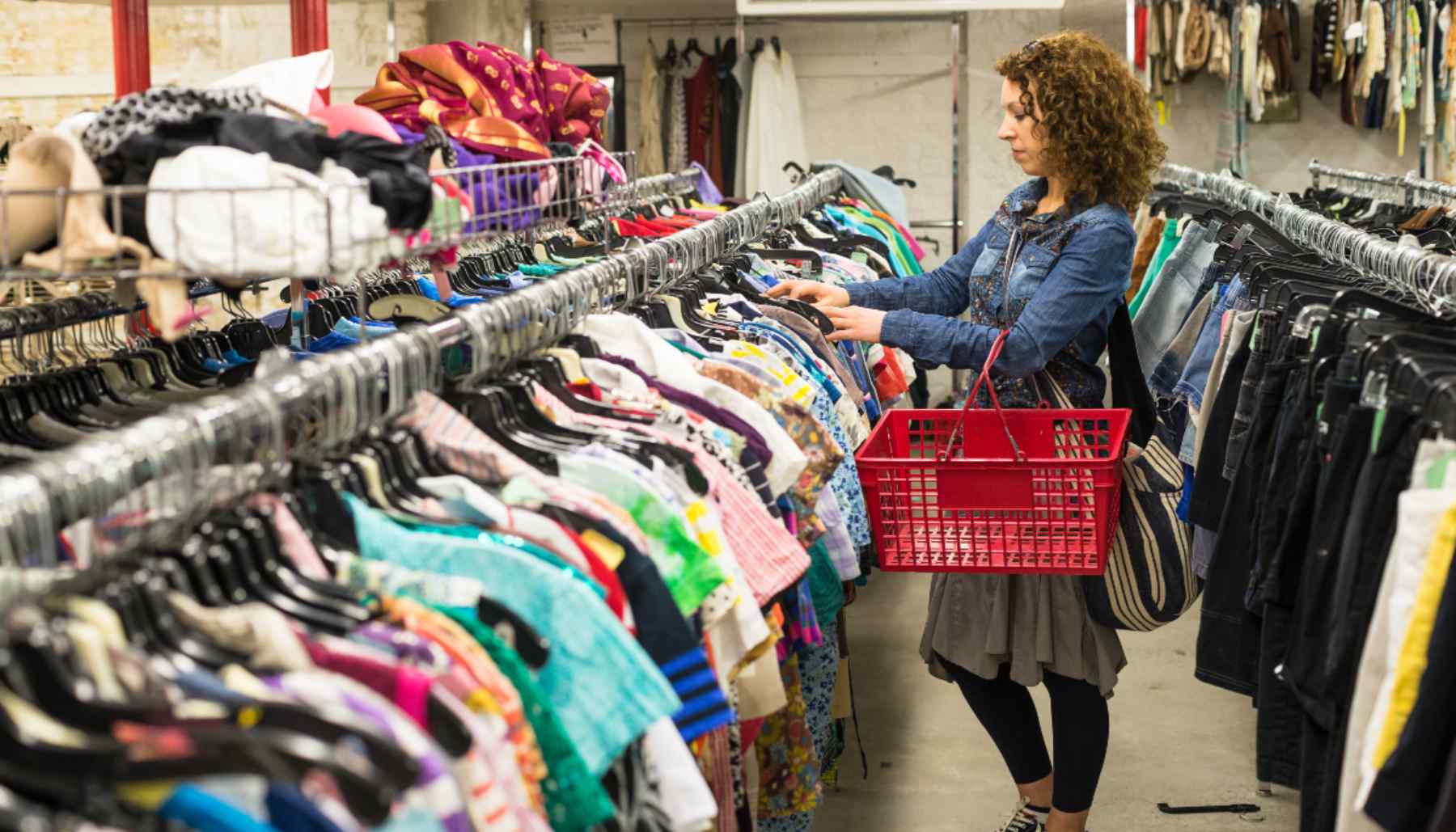The shift I’ve identified has occurred over the past decade and is ongoing today. I’m planning to analyze the growing popularity of second-hand clothing or, to use the trendier term, “thrifting.” Second-hand clothing stores like Goodwill and Salvation Army used to be viewed as only for people who couldn’t afford to buy brand new clothes. Now second-hand clothing is seen as trendy, stylish, and the eco-friendly choice.

Looking through YouTube videos posted about thrifting for clothing specifically, it seems the movement began gaining popularity around 5 years ago when youtuber turned celebrity influencer Emma Chamberlain began posting thrift “hauls” on the platform. As far as why this trend should be discussed, it has interesting ties to other trends in society, including a rising global focus on sustainability and ethically made products.
One important factor to consider alongside the growing popularity of thrifting is the growing power (and backlash) against fast fashion brands, the most popular of which being Chinese-owned clothing company Shein (pronounced She-in). Time magazine reports that the focus of Shein’s marketing campaign is it’s micro-celebrity sponsored #SHEINhaul videos. These hauls represent a core value of the brand and of its consumers, affordability. Or more bluntly, purchasing cheap, poorly made clothes, that will likely not last beyond a few wears. One reason consumers love Shein is that the low prices allow them to frequently update their wardrobe. This is an understandable appeal however, it’s a need that can also be fulfilled by a much more sustainable and ethical option, thrifting. In my analysis I’ll explore how thrifting rose as an alternative to the desires fulfilled by fast fashion.
Another evolving idea that has created the change in thinking around thrifting is a rising global awareness for climate change and sustainability. Millennials and Gen Z especially show higher rates of concern for the climate crisis than other generations (Source 4). Because of this, we often see thrifting promoted as a sustainable option to appeal to the values of consumers. As consumers become more conscious of the importance of sustainable shopping, the popularity of thrifting is expected to continue to rise (Source 4).

One last idea I’m considering is exploring why society seems reluctant to adopt sustainable clothing brands, or buying new clothes that are well-made and sustainably produced. To me, this represents a lack of buy-in to sustainability. It seems that people will pick an eco-friendly option, as long as it doesn’t cost them much money. If sustainability is such a big issue, and we know that global awareness for it is rising, why are people still reluctant to invest more money into responsible companies? Like I said, this is a new thought that I need to consider and explore more.
Works Cited
Source 1: Rise of Thrifting: Solution to Fast Fashion or Stealing from the Poor? – Berkeley Economic Review
Nair, Nanditha. “Rise of Thrifting: Solution to Fast Fashion or Stealing from the Poor …” Berkeley Economic Review, 19 Nov. 2019, econreview.berkeley.edu/rise-of-thrifting-solution -to-fast-fashion-or-stealing-from-the-poor/. Accessed 17 Oct. 2023.
This article looks at the historical process of how people get clothing and how that has changed over time. According to the article Gen Y and Gen Z are more concerned about climate change than previous generations, driving the shift toward sustainable, “circular” fashion. I can use this in my essay to examine why the paradigm shift occurred and what changing values it represents in society.
Source 2: What Is Fast Fashion, Anyway? – The Good Trade (within last 6 months)
Stanton, Audrey. “What Is Fast Fashion, Anyway?” The Good Trade, 2 Oct. 2023, www.thegoodtrade.com/features/what-is-fast-fashion/. Accessed 17 Oct. 2023.
This article explains more in depth about what fast fashion is and how the negative consequences of it. It talks about slow fashion as an alternative, clothing that is sustainably made. Interesting, thrifting has caught on more than people investing in clothing that is new and sustainably made. I can use this article to help explain fast fashion and why it’s harmful, which will help me to explore why people want to shift away from it in favor of used clothing.
Source 3: Secondhand apparel market worldwide 2021-2027 | Statista (Updated within last 6 months)
Smith, P. “Secondhand apparel market value worldwide from 2021 to 2027.”, Statista, 5 Sept. 2023, www.statista.com/statistics/826162/apparel-resale-market-value-worldwide/. Accessed 17 Oct. 2023.
Shows statistics to support the claim that the sustainable clothing industry has grown as people have shifted their thinking about secondhand clothing. Predicts that the secondhand clothing industry will continue to grow. I can use the information presented here to help support my claim that sustainable fashion is becoming more popular and possibly show the correlation (though not causation) between an increase in concern about climate change and an increase in sustainable fashion.
Funk, Cary. “Key findings: How Americans’ attitudes about climate change differ by generation, party and other factors.” Pew Research Center, 26 May 2021, www.pewresearch.org/ short-reads/2021/05/26/key-findings-how-americans-attitudes-about-climate-change-differ-by-generation-party-and-other-factors/.
This article seeks to show the gradual shift in how generations view climate change. It shows that younger generations are more concerned about climate change than previous generations but also shows that climate change awareness has generally increased across generations. This shows a shift in thinking (people altering their actions due to sustainability concerns) that is represented in the increased popularity of thrifting.
Source 5: Shein’s Fast Fashion Domination Comes at a High Cost | Time
Rajvanshi, Astha. “Shein Is the World’s Most Popular Fashion Brand—at a Huge Cost to Us All.” Time, 17 Jan. 2023, time.com/6247732/shein-climate-change-labor-fashion/. Accessed 25 Oct. 2023.
In order to show a shift away from fast fashion, I will need to explore a bit about how fast fashion has come to dominate the market in recent years. I’ll also explain all the problems with that business model as I will show that these problems and growing awareness encouraged people to join the sustainable fashion trend.
Source 6: 13 Best Sustainable Clothing Brands 2023 – Forbes Vetted
Fumo, Nicola. “The 13 Best Sustainable Clothing Brands to Shop and Feel Good About.” Vetted, Forbes Magazine, 3 Sept. 2023, www.forbes.com/sites/forbes-personal-shopper/article/ best-sustainable-clothing-brands/?sh=39f5a4c2227d. Accessed 25 Oct. 2023.
This article lists top sustainable clothing brands. I think it could be useful to compare prices of items from sustainable brands with Shein. I’m also considering exploring how people chose thrifting for sustainable clothes instead of purchasing new sustainably made clothes, which don’t seem to be gaining as much attention as thrifting. Does this represent a lack of buy-in to sustainability goals by our society?
